- Home
- Public Benefits
- Commerce
- Case Studies
- Egrove Park
A site such as Egrove lends itself to wildlife, so the obvious route is to manage it for wildlife while keeping a balance between truly wild elements and the more ornamental areas which we have around the accommodation and main buildings or, as we refer to it, ‘front of house’. These areas are a bit more manicured and have planned planting schemes, but the planting is still chosen for its benefits to wildlife.
As the grounds consist of ponds, woodlands, wildflower meadows and lots of specimen trees, we have a variety of wildlife habitats which have always been present – so why do we feel that we need to enhance what we already have?
I think most people are aware of the issues facing wildlife in the world, the loss of habitats, the decline of various species, but perhaps not the scale of the challenges.
“Between 1970 and 2013, 56% of species declined, with 40% showing strong or moderate declines. 44% of species increased, with 29% showing strong or moderate increases. Between 2002 and 2013, 53% of species declined and 47% increased. These measures were based on quantitative trends for almost 4,000 terrestrial and freshwater species in the UK. Of the nearly 8,000 species assessed using modern Red List criteria, 15% are extinct or threatened with extinction from Great Britain.” |
This report alone is reason enough to make space for wildlife in your gardens, but what are the other benefits of wildlife gardening? I believe the benefits are:
•Sheer enjoyment of gardening |
•Discovering new plants naturally growing |
•Improving fitness, keeping people active |
•The pleasure of watching the flora and fauna grow |
•Increasing and developing your knowledge of the natural world |
•For your mental health and wellbeing |
I could write pages and pages about the wildlife management, flora and fauna of Egrove Park, which wildlife-friendly plants we use, where and why, and perhaps I will, but this is an article about the benefits of managing wildlife for all who make use of the site.
Egrove is where Saïd Business School delivers its Executive Education programmes. We run intensive residential business courses which keep staff and participants busy for the best part of the day. In modern society working days are busier than ever, and quite often the gap between work and home life narrows so that they almost merge into one. People don’t get much time to truly relax and take time out for themselves. Do we really separate ourselves from work? Do we ever really switch off?
Part of the problem is certainly at work: when people do walk outside at lunchtime, they rarely stray off the tarmac, or they walk around looking at their mobile phones, not at their surroundings. This needs to be encouraged to change. An example of this was when I saw Egrove’s residential roe deer family on the edge of the woods, two adults and a fawn. A group of people walked past, chatting and mostly looking down, and no one looked up and saw them, even though I was waving my arms around trying to get their attention.
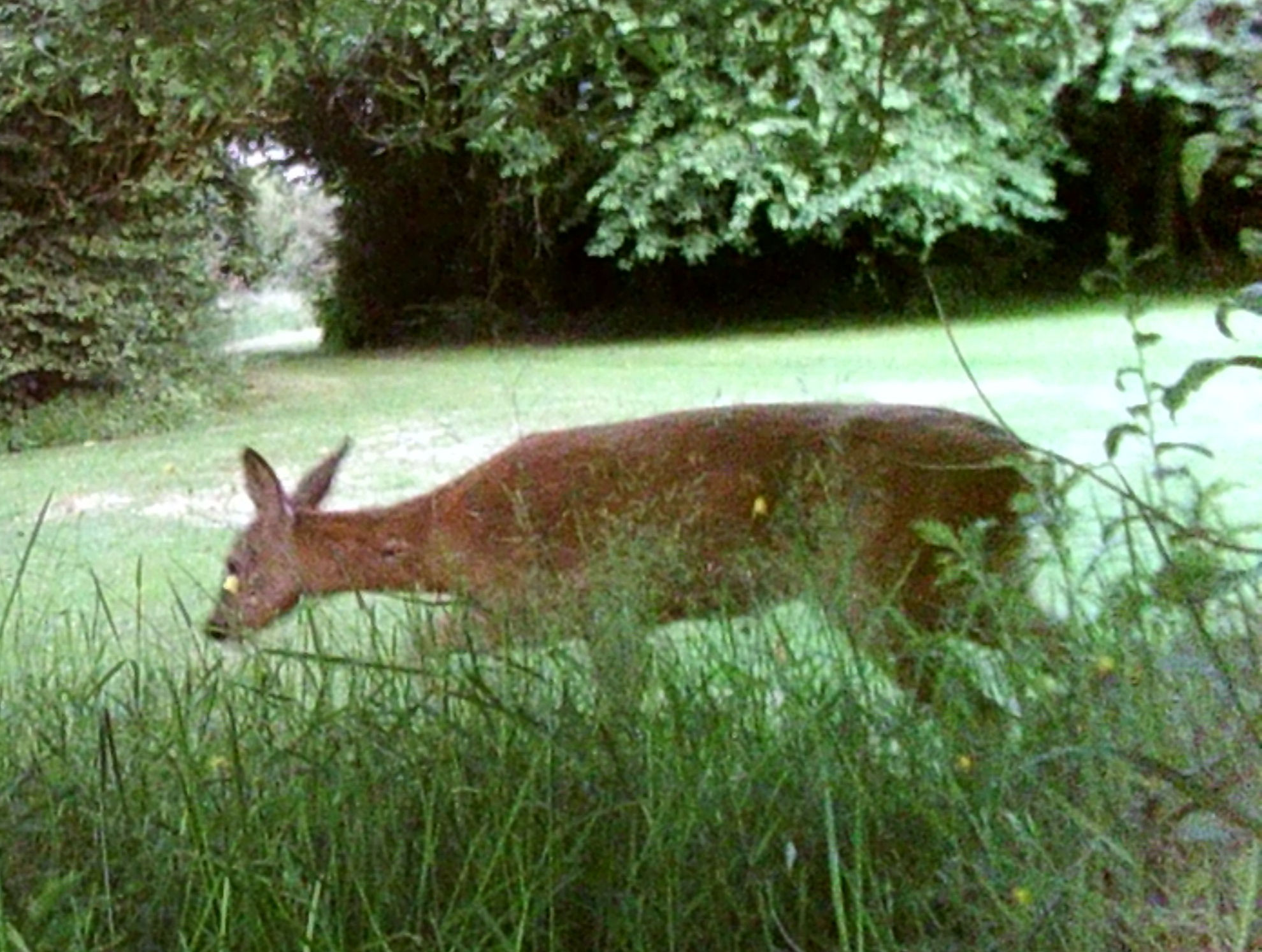
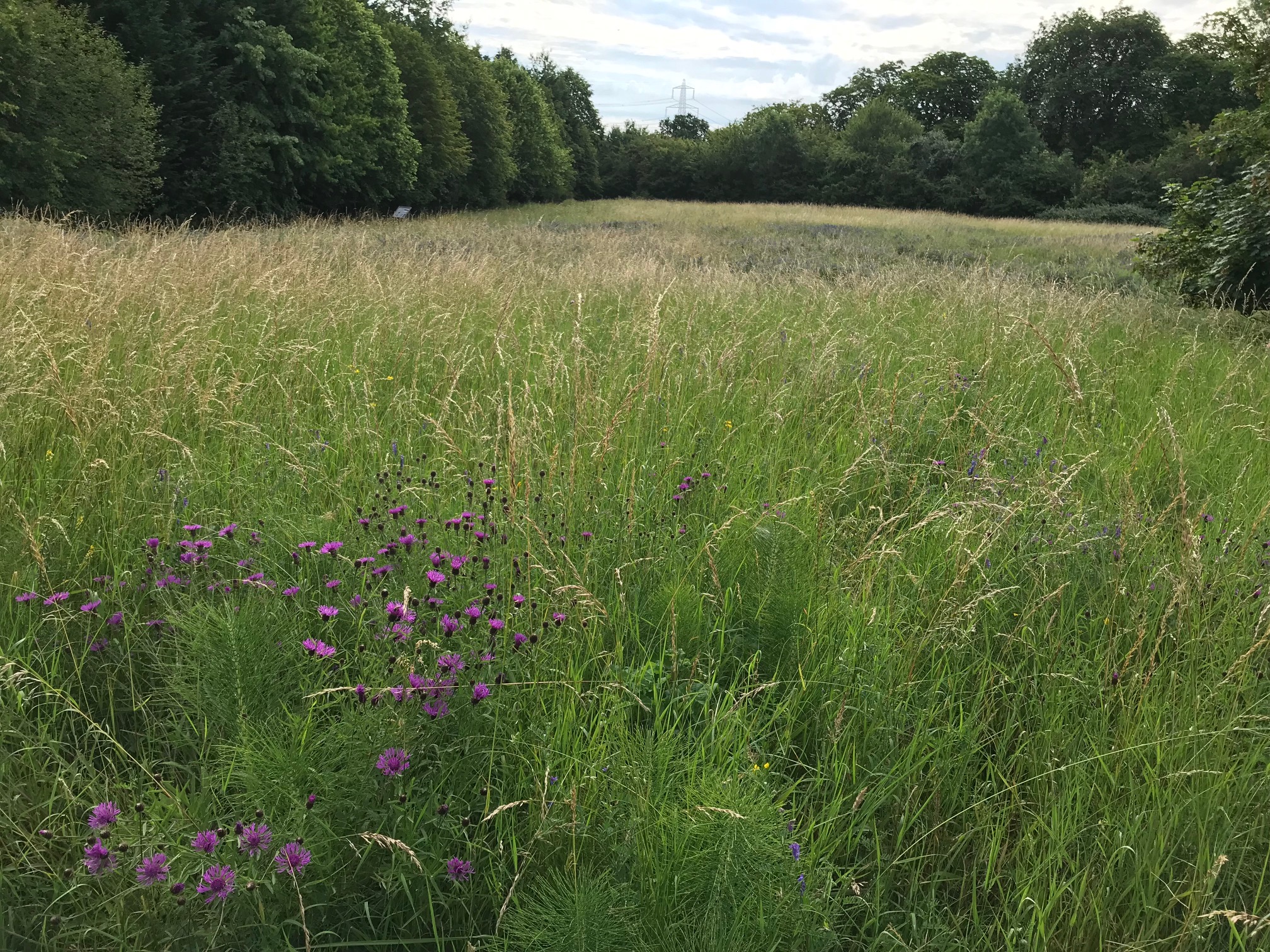
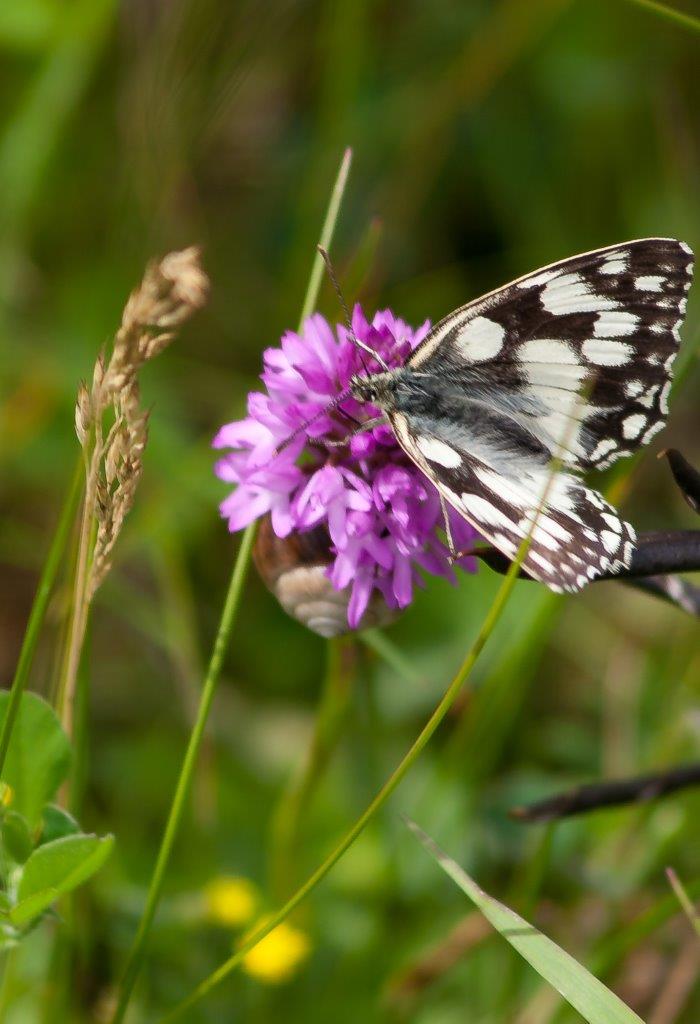
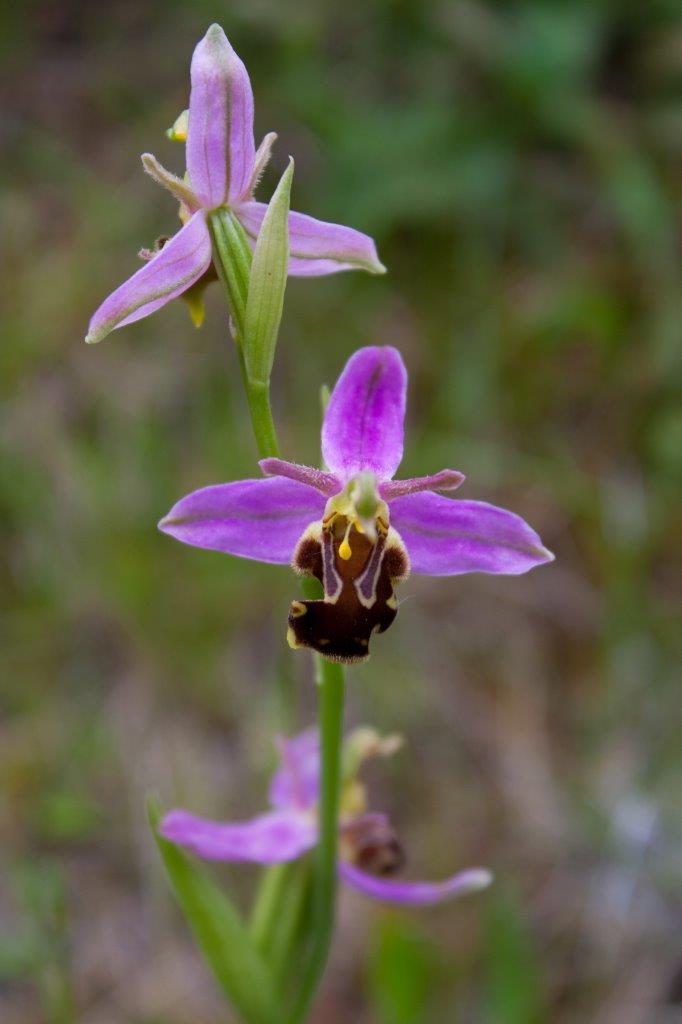
Due to the nature of the grounds we have ideal habitats for roe deer, and we have had a family of them living in our grounds for the last four years. They were visiting us for the summer months for a fair few years before they decided to stay, so we make sure that we maintain scrubby areas bordering our woods and copses for them to shelter in, and we leave the fallen apples in the orchard for them to eat in the autumn. The two wildflower meadows give them the perfect place to sit and stay out of sight, and to hide their fawns. It is so lovely to see these beautiful animals roaming around almost daily. I get so many calls and emails from excited staff who look out of their office windows to see the deer eating leaves from trees on the fringes of the woodlands. For me this is partly what it is all about, experiencing the enjoyment and excitement the wildlife brings out in others who would not normally encounter it.
The deer are just one of the many species we have: we have lots of bird boxes, and many species of garden birds (two of my favourites are the tree creeper and nuthatch). There are bees in our hives, badgers, foxes, raptors, and bats, to name but a few of the wonderful animals we have making good use of our grounds.
So why do we do this? Why does the Business School allow us to manage the grounds in this way? I believe that maintaining and managing these grounds in this manner brings joy to the staff and participants and everyone who comes to and stays at Egrove. I believe that taking time out to go for a walk encourages a healthy working environment: I believe it can improve your state of mind, allowing people to have a more productive day. Most of the participants who come to Egrove are Executive level, and this is often a complete change in their environment. They work in cities, and here they stay and study in a parkland setting where they are removed from their regular environment. This gives them the opportunity to pause and reflect on all that they are learning and all that they do.
This is part of the reason I think it is important to encourage the wildlife we have here, so when staff and customers have time to get outside and walk around, they can go and sit quietly in the woods and even if it’s only for fifteen or twenty minutes there will be plenty of things to hear and see. I love our woodlands first thing in the morning or early evening: you can go and find a log, and sit out there, just take a breath, and close your eyes and listen. The sound of nearby traffic soon fades away and you start to hear the birds, pick up the scent of the larch trees, hear the rustle of squirrels above you. When you open your eyes again, you will start to see these things and pick up the detail of your surroundings. It does for me bring a sense of comfort and peace, it clears your head of daily life and fills it with enjoyment and wonder of the natural world which surrounds us. This must be good for your own wellbeing.
Saïd Business School holds wellbeing days, where they run lots of initiatives for staff to get involved with. As part of the activities I lead walks around the grounds of Egrove, taking staff off the tarmac and through the woods and meadows. I show them what we do and how we manage the site, point out the different wildflowers and orchids, point out the different birds, and explain a little about the habitats. The people who have come on these walks always enjoy them, and I try to encourage them to start walking off the paths and see for themselves what we have here.
Roe deer hind at Egrove Park
We also offer these walks to participants who are staying here to study. They are always amazed and fascinated by what we have and love the way it breaks up their otherwise intensive day. I encourage everyone to get outside into the meadows and woods, turn your phone off and just sit, look and listen; it is calming, and it does relax you – the swishing of the grasses, the buzzing of bees, the sound of crickets. It is soothing and refreshing, and it clears your mind. It must be good for you.
The Wildlife Trusts have a whole section on their website for nature, health and wellbeing which states:
“Those that have the least access to nature also have the worst levels of physical health and mental wellbeing.”
The University of Exeter-based Dose of Nature programme has worked with the Wildlife Trusts and other to evaluate the benefits of nature exposure. Horticulture can and does help many people with mental health and wellbeing issues, and gardening for wildlife is even better. At the Saïd Business School we are considering a gardening club where staff can spend spare time out of the office, tend to plants, and do a bit of weeding: it is a great stress reliever, and you learn new skills. This is a long way off yet, but it is worth looking into.
I get a huge amount of pleasure from my job, managing these grounds for the benefit of the wildlife, which in turn benefits everyone who comes here, regardless of whether they are staff, customers, or just visiting. Take some time out get outside and enjoy the natural world that surrounds us, and I don’t just mean at your workplace, but wherever you are. It can only be good for you!
Page written by Nick Bishop, Grounds Manager Saïd Business School, University of Oxford
Egrove Park: Oxford Saïd Business School
Egrove Park is a 37-acre estate which is home to the Oxford Saïd Business School’s Executive Education delivery centre. The grounds consist of species-rich wildflower meadows, wooded areas, a series of ponds and open green spaces. There are over twelve thousand trees planted around Egrove to shield it from the surrounding dual carriageway noise.
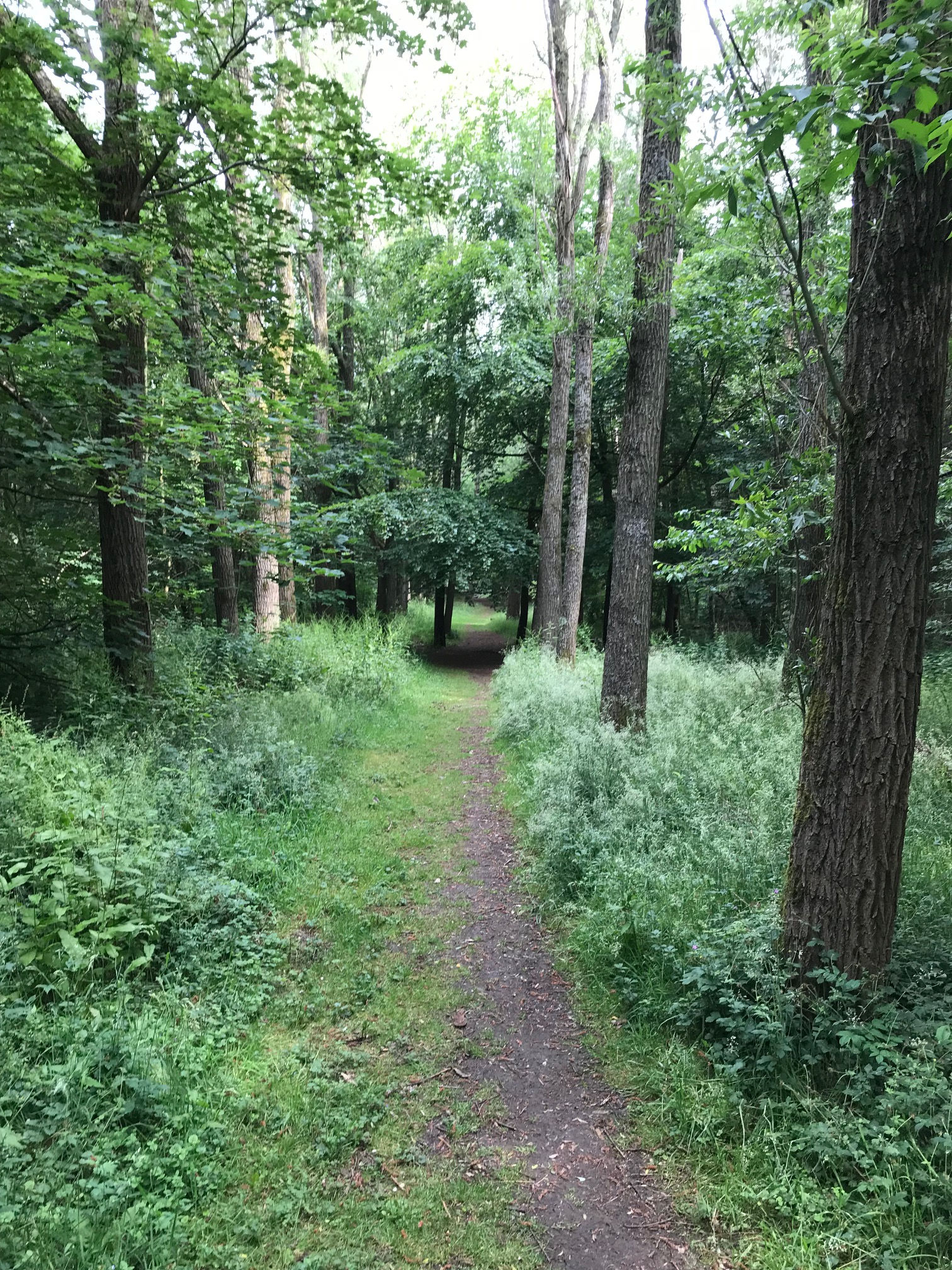
Left: Bee orchid
Right: Marbled white butterfly on a pyramidal orchid
Egrove Park: Oxford Saïd Business School
Egrove Park is a 37-acre estate which is home to the Oxford Saïd Business School’s Executive Education delivery centre. The grounds consist of species-rich wildflower meadows, wooded areas, a series of ponds and open green spaces. There are over twelve thousand trees planted around Egrove to shield it from the surrounding dual carriageway noise.


A site such as Egrove lends itself to wildlife, so the obvious route is to manage it for wildlife while keeping a balance between truly wild elements and the more ornamental areas which we have around the accommodation and main buildings or, as we refer to it, ‘front of house’. These areas are a bit more manicured and have planned planting schemes, but the planting is still chosen for its benefits to wildlife.
As the grounds consist of ponds, woodlands, wildflower meadows and lots of specimen trees, we have a variety of wildlife habitats which have always been present – so why do we feel that we need to enhance what we already have?
I think most people are aware of the issues facing wildlife in the world, the loss of habitats, the decline of various species, but perhaps not the scale of the challenges.
“Between 1970 and 2013, 56% of species declined, with 40% showing strong or moderate declines. 44% of species increased, with 29% showing strong or moderate increases. Between 2002 and 2013, 53% of species declined and 47% increased. These measures were based on quantitative trends for almost 4,000 terrestrial and freshwater species in the UK. Of the nearly 8,000 species assessed using modern Red List criteria, 15% are extinct or threatened with extinction from Great Britain.” |
This report alone is reason enough to make space for wildlife in your gardens, but what are the other benefits of wildlife gardening? I believe the benefits are:
•Sheer enjoyment of gardening |
•Discovering new plants naturally growing |
•Improving fitness, keeping people active |
•The pleasure of watching the flora and fauna grow |
•Increasing and developing your knowledge of the natural world |
•For your mental health and wellbeing |
I could write pages and pages about the wildlife management, flora and fauna of Egrove Park, which wildlife-friendly plants we use, where and why, and perhaps I will, but this is an article about the benefits of managing wildlife for all who make use of the site.
Egrove is where Saïd Business School delivers its Executive Education programmes. We run intensive residential business courses which keep staff and participants busy for the best part of the day. In modern society working days are busier than ever, and quite often the gap between work and home life narrows so that they almost merge into one. People don’t get much time to truly relax and take time out for themselves. Do we really separate ourselves from work? Do we ever really switch off?
Part of the problem is certainly at work: when people do walk outside at lunchtime, they rarely stray off the tarmac, or they walk around looking at their mobile phones, not at their surroundings. This needs to be encouraged to change. An example of this was when I saw Egrove’s residential roe deer family on the edge of the woods, two adults and a fawn. A group of people walked past, chatting and mostly looking down, and no one looked up and saw them, even though I was waving my arms around trying to get their attention.

Roe deer hind at Egrove Park


Left: Bee orchid
Right: Marbled white butterfly on a pyramidal orchid
We also offer these walks to participants who are staying here to study. They are always amazed and fascinated by what we have and love the way it breaks up their otherwise intensive day. I encourage everyone to get outside into the meadows and woods, turn your phone off and just sit, look and listen; it is calming, and it does relax you – the swishing of the grasses, the buzzing of bees, the sound of crickets. It is soothing and refreshing, and it clears your mind. It must be good for you.
The Wildlife Trusts have a whole section on their website for nature, health and wellbeing which states:
“Those that have the least access to nature also have the worst levels of physical health and mental wellbeing.”
The University of Exeter-based Dose of Nature programme has worked with the Wildlife Trusts and other to evaluate the benefits of nature exposure. Horticulture can and does help many people with mental health and wellbeing issues, and gardening for wildlife is even better. At the Saïd Business School we are considering a gardening club where staff can spend spare time out of the office, tend to plants, and do a bit of weeding: it is a great stress reliever, and you learn new skills. This is a long way off yet, but it is worth looking into.
I get a huge amount of pleasure from my job, managing these grounds for the benefit of the wildlife, which in turn benefits everyone who comes here, regardless of whether they are staff, customers, or just visiting. Take some time out get outside and enjoy the natural world that surrounds us, and I don’t just mean at your workplace, but wherever you are. It can only be good for you!
By Nick Bishop, Grounds Manager Saïd Business School, University of Oxford
Due to the nature of the grounds we have ideal habitats for roe deer, and we have had a family of them living in our grounds for the last four years. They were visiting us for the summer months for a fair few years before they decided to stay, so we make sure that we maintain scrubby areas bordering our woods and copses for them to shelter in, and we leave the fallen apples in the orchard for them to eat in the autumn. The two wildflower meadows give them the perfect place to sit and stay out of sight, and to hide their fawns. It is so lovely to see these beautiful animals roaming around almost daily. I get so many calls and emails from excited staff who look out of their office windows to see the deer eating leaves from trees on the fringes of the woodlands. For me this is partly what it is all about, experiencing the enjoyment and excitement the wildlife brings out in others who would not normally encounter it.
The deer are just one of the many species we have: we have lots of bird boxes, and many species of garden birds (two of my favourites are the tree creeper and nuthatch). There are bees in our hives, badgers, foxes, raptors, and bats, to name but a few of the wonderful animals we have making good use of our grounds.
So why do we do this? Why does the Business School allow us to manage the grounds in this way? I believe that maintaining and managing these grounds in this manner brings joy to the staff and participants and everyone who comes to and stays at Egrove. I believe that taking time out to go for a walk encourages a healthy working environment: I believe it can improve your state of mind, allowing people to have a more productive day. Most of the participants who come to Egrove are Executive level, and this is often a complete change in their environment. They work in cities, and here they stay and study in a parkland setting where they are removed from their regular environment. This gives them the opportunity to pause and reflect on all that they are learning and all that they do.
This is part of the reason I think it is important to encourage the wildlife we have here, so when staff and customers have time to get outside and walk around, they can go and sit quietly in the woods and even if it’s only for fifteen or twenty minutes there will be plenty of things to hear and see. I love our woodlands first thing in the morning or early evening: you can go and find a log, and sit out there, just take a breath, and close your eyes and listen. The sound of nearby traffic soon fades away and you start to hear the birds, pick up the scent of the larch trees, hear the rustle of squirrels above you. When you open your eyes again, you will start to see these things and pick up the detail of your surroundings. It does for me bring a sense of comfort and peace, it clears your head of daily life and fills it with enjoyment and wonder of the natural world which surrounds us. This must be good for your own wellbeing.
Saïd Business School holds wellbeing days, where they run lots of initiatives for staff to get involved with. As part of the activities I lead walks around the grounds of Egrove, taking staff off the tarmac and through the woods and meadows. I show them what we do and how we manage the site, point out the different wildflowers and orchids, point out the different birds, and explain a little about the habitats. The people who have come on these walks always enjoy them, and I try to encourage them to start walking off the paths and see for themselves what we have here.












